Connect to and manage a Power BI tenant in Microsoft Purview (cross-tenant)
This article outlines how to register a Power BI tenant in a cross-tenant scenario, and how to authenticate and interact with the tenant in Microsoft Purview. If you're unfamiliar with the service, see Learn about Microsoft Purview.
Note
For scanning a Microsoft Fabric tenant, see our Microsoft Fabric documentation.
Supported capabilities
| Metadata Extraction | Full Scan | Incremental Scan | Scoped Scan | Classification | Labeling | Access Policy | Lineage | Data Sharing | Live view |
|---|---|---|---|---|---|---|---|---|---|
| Yes | Yes | Yes | No | No | No | No | Yes | No | No |
* Power BI items in a Microsoft Fabric tenant are available using live view.
When scanning Power BI source, Microsoft Purview supports:
Extracting technical metadata including:
- Workspaces
- Dashboards
- Reports
- Datasets including the tables and columns
- Dataflows
- Datamarts
Fetching static lineage on assets relationships among above Power BI artifacts and external data source assets. Learn more from Power BI lineage.
Supported scenarios for Power BI scans
| Scenario | Microsoft Purview public access | Power BI public access | Runtime option | Authentication option | Deployment checklist |
|---|---|---|---|---|---|
| Public access with Azure integration runtime | Allowed | Allowed | Azure runtime | Delegated authentication / Service principal | Deployment checklist |
| Public access with self-hosted integration runtime | Allowed | Allowed | Self-hosted runtime | Delegated authentication / Service principal | Deployment checklist |
| Private access | Denied | Allowed | Managed VNet IR (v2 only) | Delegated authentication / Service principal | Review deployment checklist |
| Private access | Allowed | Denied | Self-hosted runtime | Delegated authentication / Service principal | Deployment checklist |
| Private access | Denied | Allowed | Self-hosted runtime | Delegated authentication / Service principal | Deployment checklist |
| Private access | Denied | Denied | Self-hosted runtime | Delegated authentication / Service principal | Deployment checklist |
Known limitations
- If Power BI tenant is protected behind a private endpoint, self-hosted runtime is the only option to scan.
- For the cross-tenant scenario, delegated authentication and service principal are the only supported authentication options for scanning.
- If the Power BI dataset schema isn't shown after the scan, it's due to one of the current limitations with the Power BI metadata scanner.
- Empty workspaces are skipped.
Prerequisites
Before you start, make sure you have the following:
An Azure account with an active subscription. Create an account for free.
An active Microsoft Purview account.
Register the Power BI tenant
From the options on the left, select Data Map.
Select Register, and then select Fabric as your data source. It includes Power BI sources and assets.
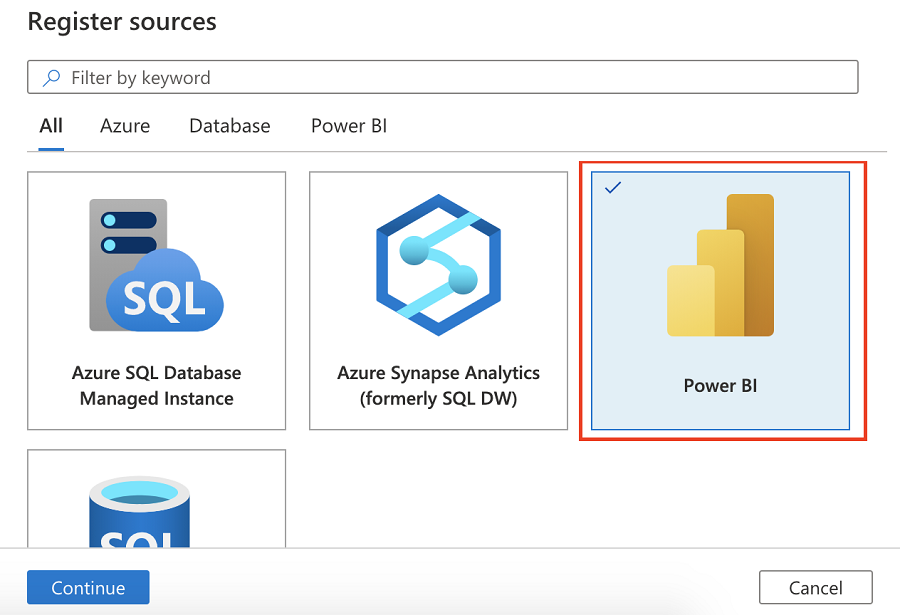
Give your data source a friendly name. The name must be 3 to 63 characters long, and must contain only letters, numbers, underscores, and hyphens. Spaces aren't allowed.
Edit the Tenant ID field, to replace with the tenant for the cross-tenant Power BI that you want to register and scan. By default, Microsoft Purview's tenant ID is populated.
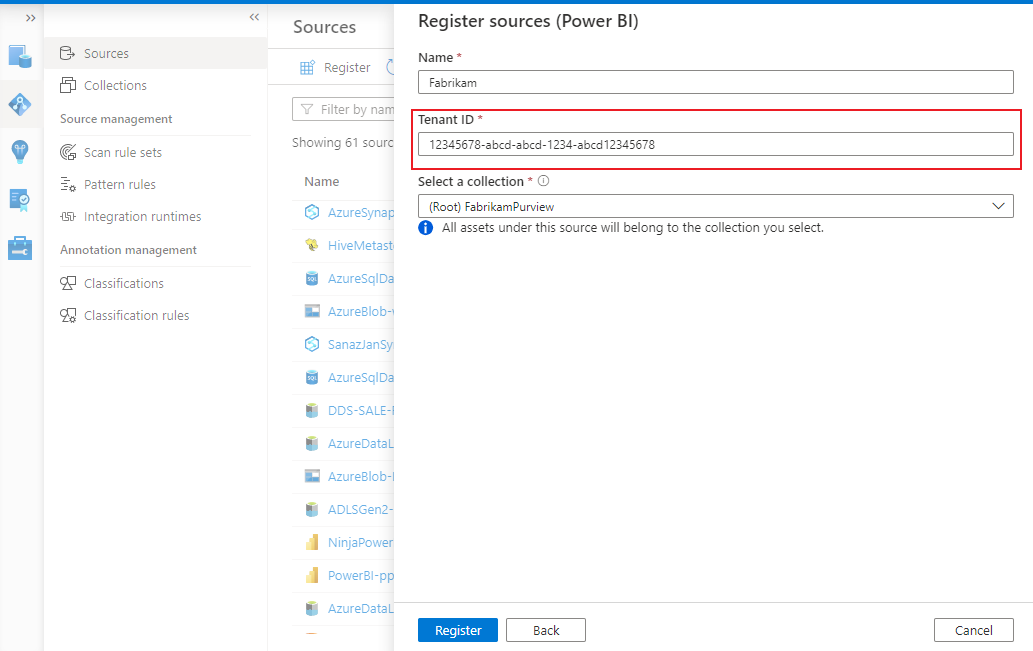
Select Register.
Authenticate to Power BI tenant
In Microsoft Entra tenant, where Power BI tenant is located:
In the Azure portal, search for Microsoft Entra ID.
Create a new security group in your Microsoft Entra ID, by following Create a basic group and add members using Microsoft Entra ID.
Tip
You can skip this step if you already have a security group you want to use.
Select Security as the Group Type.
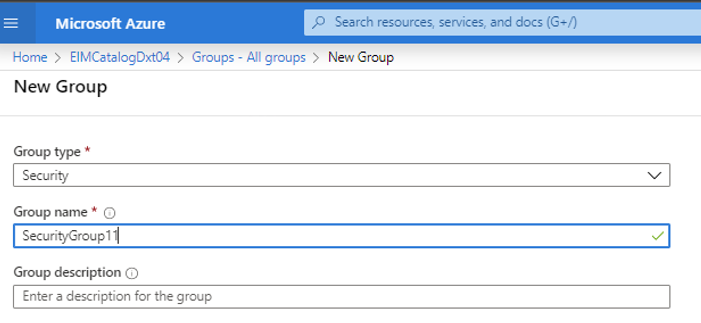
Select Members, then select + Add members.
Search for your Microsoft Purview managed identity or service principal and select it.
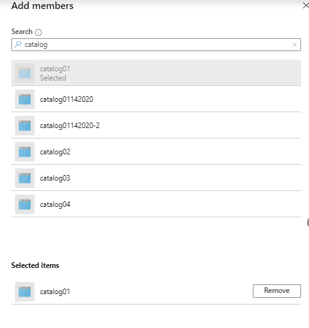
You should see a success notification showing you that it was added.

Associate the security group with Power BI tenant
Log into the Power BI admin portal.
Select the Tenant settings page.
Important
You need to be a Power BI Admin to see the tenant settings page.
Select Admin API settings > Allow service principals to use read-only Power BI admin APIs (Preview).
Select Specific security groups.
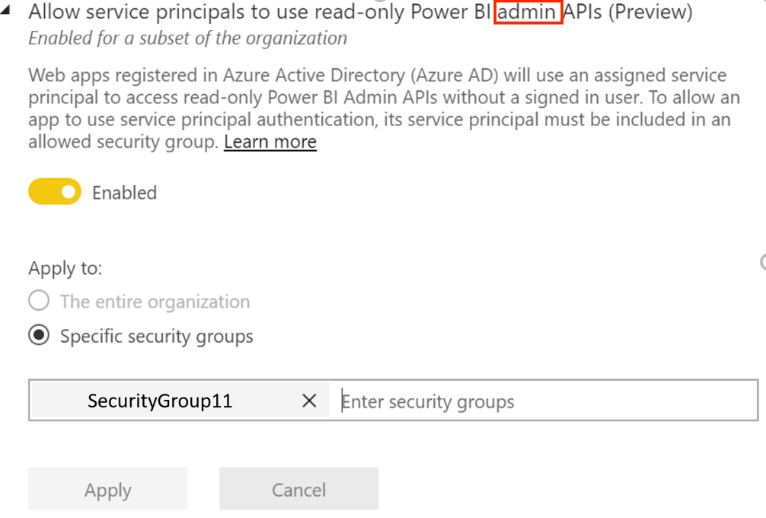
Select Admin API settings > Enhance admin APIs responses with detailed metadata and Enhance admin APIs responses with DAX and mashup expressions > Enable the toggle to allow Microsoft Purview Data Map automatically discover the detailed metadata of Power BI datasets as part of its scans.
Important
After you update the Admin API settings on your power bi tenant, wait around 15 minutes before registering a scan and test connection.
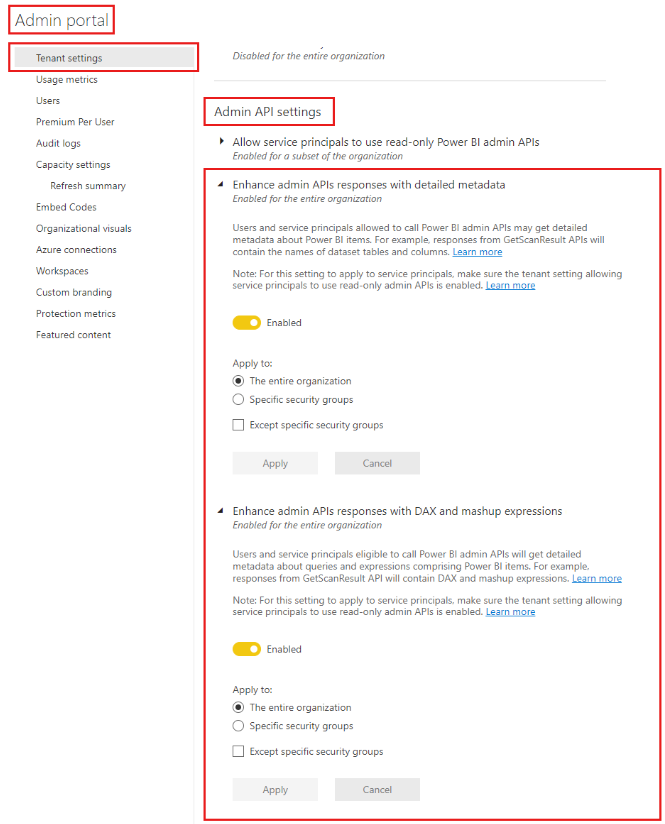
Caution
When you allow the security group you created (that has your Microsoft Purview managed identity as a member) to use read-only Power BI admin APIs, you also allow it to access the metadata (e.g. dashboard and report names, owners, descriptions, etc.) for all of your Power BI artifacts in this tenant. Once the metadata has been pulled into the Microsoft Purview, Microsoft Purview's permissions, not Power BI permissions, determine who can see that metadata.
Note
You can remove the security group from your developer settings, but the metadata previously extracted won't be removed from the Microsoft Purview account. You can delete it separately, if you wish.
Scan cross-tenant Power BI
Delegated authentication and service principals are the only supported options for cross-tenant scanning. You can scan using either:
Create scan for cross-tenant using Azure IR with delegated authentication
To create and run a new scan by using the Azure runtime, perform the following steps:
Create a user account in the Microsoft Entra tenant where the Power BI tenant is located, and assign the user to this role: Fabric Administrator. Take note of the username and sign in to change the password.
Go to the instance of Azure Key Vault in the tenant where Microsoft Purview is created.
Select Settings > Secrets, and then select + Generate/Import.
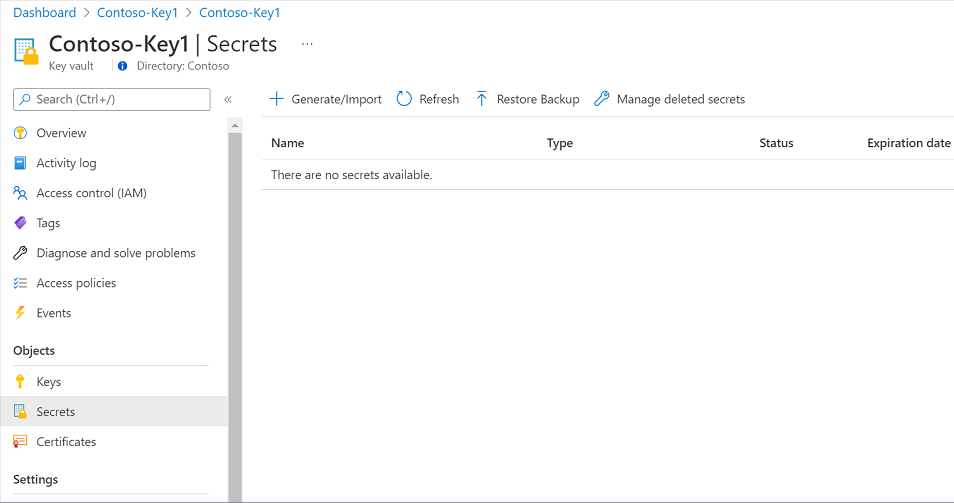
Enter a name for the secret. For Value, type the newly created password for the Microsoft Entra user. Select Create to complete.
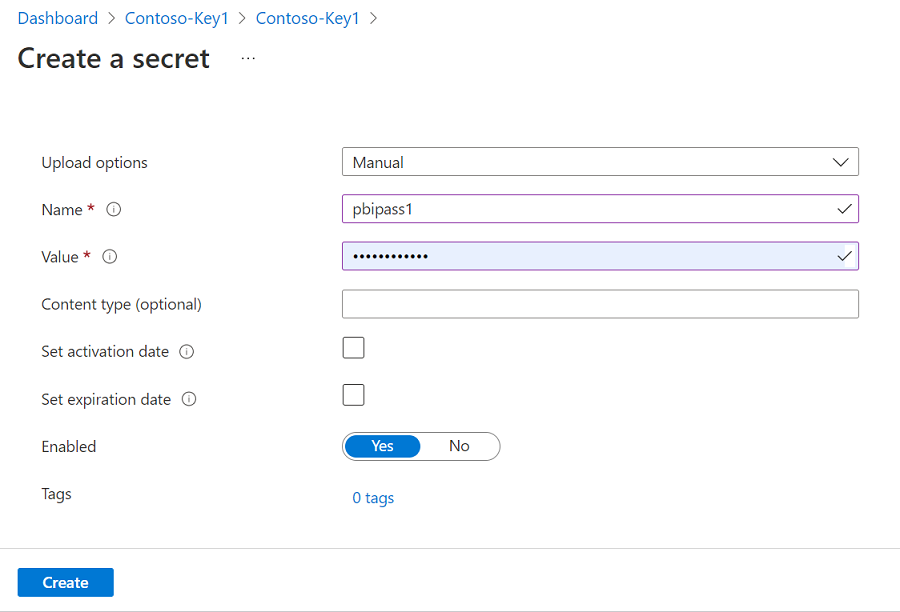
If your key vault isn't connected to Microsoft Purview yet, you need to create a new key vault connection.
Create an app registration in your Microsoft Entra tenant where Power BI is located. Provide a web URL in the Redirect URI.
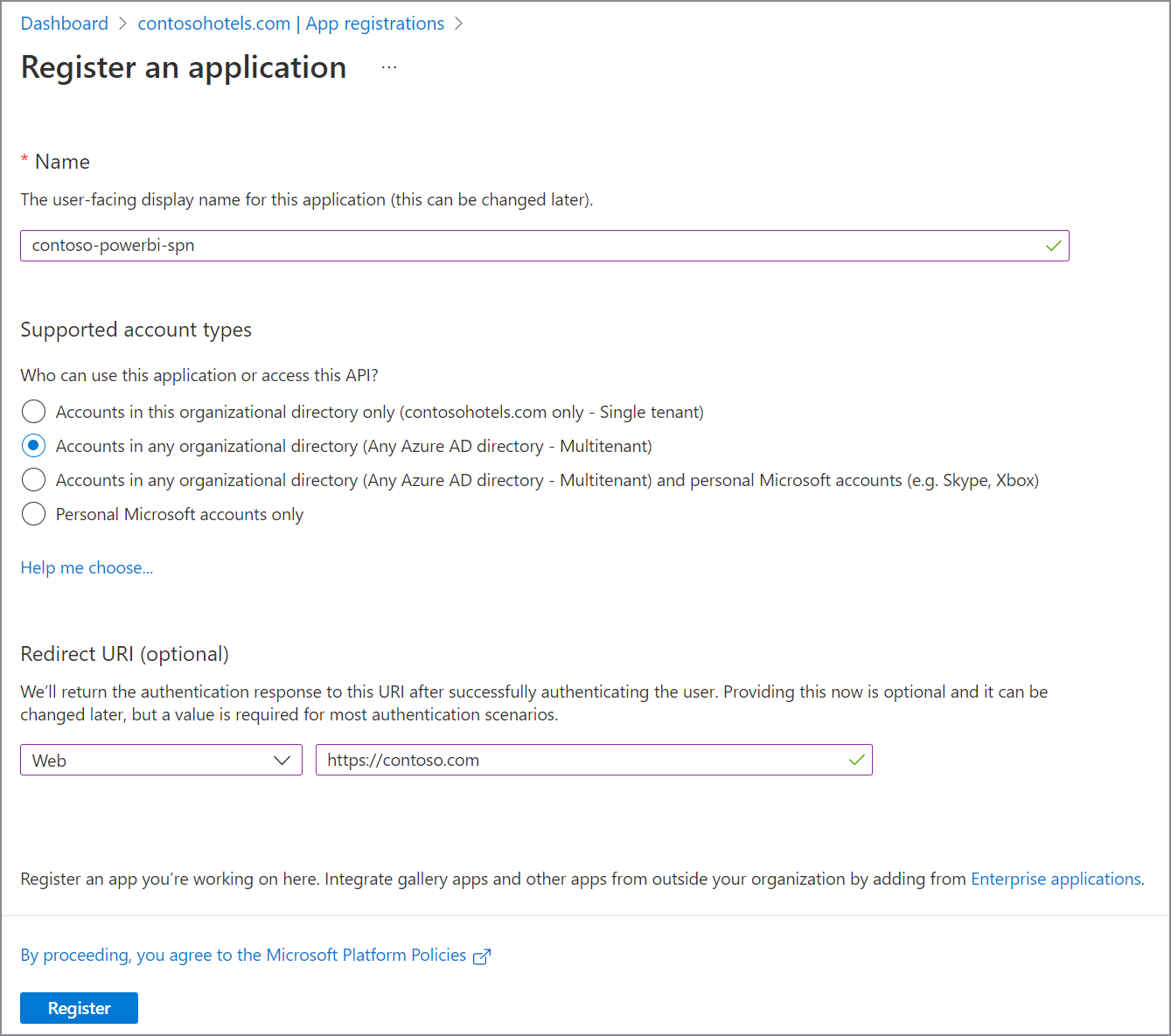
Take note of the client ID (app ID).
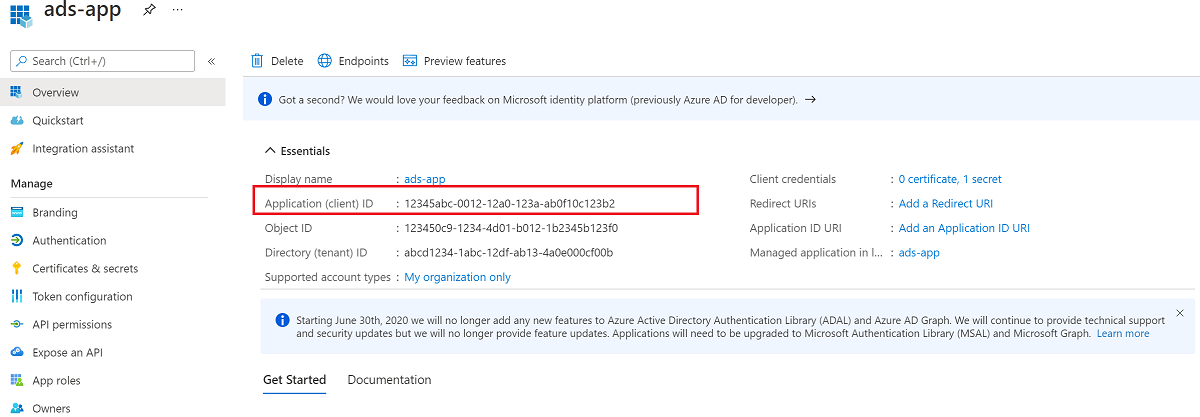
From the Microsoft Entra dashboard, select the newly created application, and then select App permissions. Assign the application the following delegated permissions, and grant admin consent for the tenant:
- Power BI Service Tenant.Read.All
- Microsoft Graph openid
- Microsoft Graph User.Read

From the Microsoft Entra dashboard, select the newly created application, and then select Authentication. Under Supported account types, select Accounts in any organizational directory (Any Microsoft Entra directory - Multitenant).

Under Implicit grant and hybrid flows, select ID tokens (used for implicit and hybrid flows).

Under Advanced settings, enable Allow Public client flows.
In the Microsoft Purview Studio, go to the Data map in the left menu. Go to Sources.
Select the registered Power BI source from cross-tenant.
Select + New scan.
Give your scan a name. Then select the option to include or exclude the personal workspaces.
Note
If you switch the configuration of a scan to include or exclude a personal workspace, you trigger a full scan of the Power BI source.
Select Azure AutoResolveIntegrationRuntime from the dropdown list.
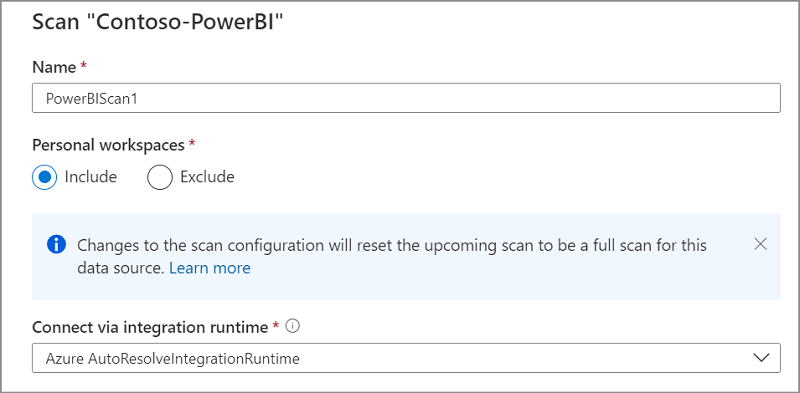
For the Credential, select Delegated authentication, and then select + New to create a new credential.
Create a new credential and provide the following required parameters:
Name: Provide a unique name for the credential.
Client ID: Use the service principal client ID (app ID) that you created earlier.
User name: Provide the username of the Fabric administrator that you created earlier.
Password: Select the appropriate Key Vault connection, and the Secret name where the Power BI account password was saved earlier.
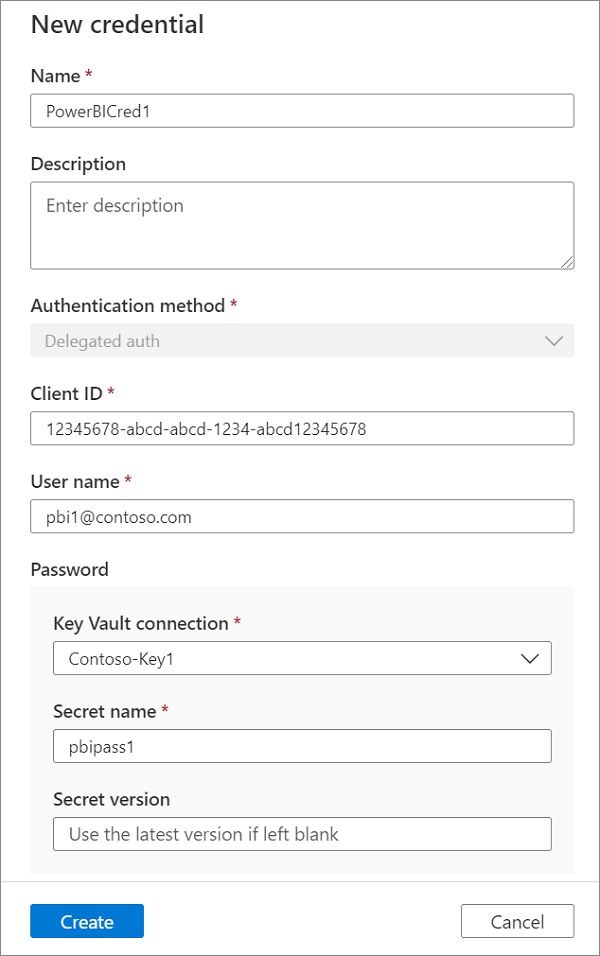
Select Test connection before continuing to the next steps.
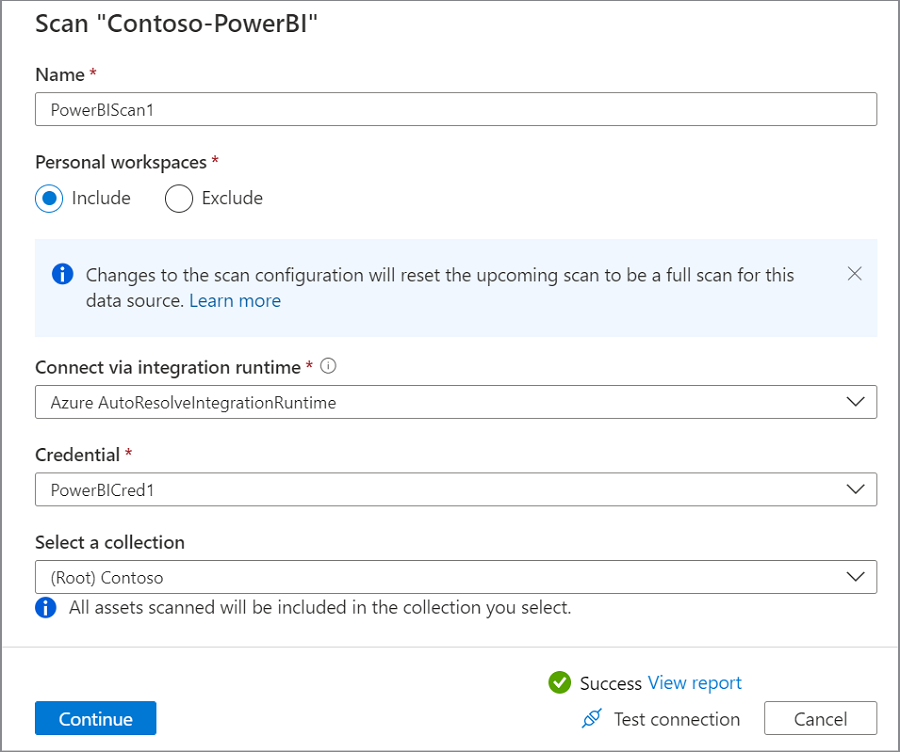
If the test fails, select View Report to see the detailed status and troubleshoot the problem:
- Access - Failed status means that the user authentication failed. Validate if the username and password are correct. Review if the credential contains the correct client (app) ID from the app registration.
- Assets (+ lineage) - Failed status means that the authorization between Microsoft Purview and Power BI has failed. Make sure that the user is added to the Fabric Administrator role (former Power BI Administrator role), and has the proper Power BI license assigned.
- Detailed metadata (Enhanced) - Failed status means that the Power BI admin portal is disabled for the following setting: Enhance admin APIs responses with detailed metadata.
Set up a scan trigger. Your options are Recurring or Once.
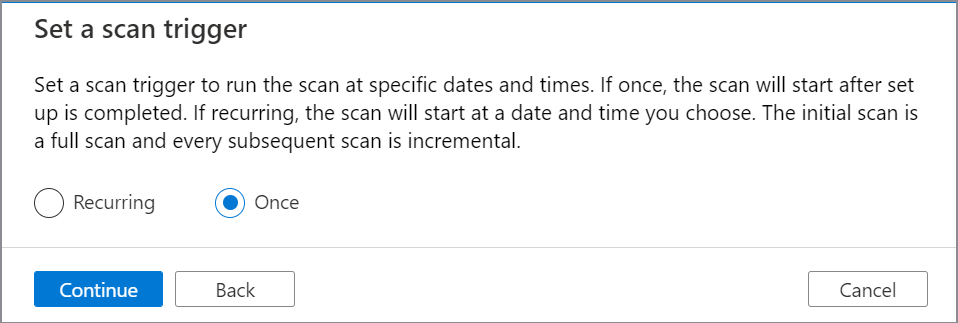
On Review new scan, select Save and run to launch your scan.

Tip
To troubleshoot any issues with scanning:
- Confirm you have completed the deployment checklist for your scenario.
- Review our scan troubleshooting documentation.
Create scan for cross-tenant using self-hosted IR with service principal
To create and run a new scan by using the self-hosted integration runtime, perform the following steps:
Create an app registration in your Microsoft Entra tenant where Power BI is located. Provide a web URL in the Redirect URI.

Take note of the client ID (app ID).

From the Microsoft Entra dashboard, select the newly created application, and then select App permissions. Assign the application the following delegated permissions:
- Microsoft Graph openid
- Microsoft Graph User.Read

From the Microsoft Entra dashboard, select the newly created application, and then select Authentication. Under Supported account types, select Accounts in any organizational directory (Any Microsoft Entra directory - Multitenant).

Under Implicit grant and hybrid flows, select ID tokens (used for implicit and hybrid flows).

Under Advanced settings, enable Allow Public client flows.
In the tenant where Microsoft Purview is created go to the instance of Azure Key Vault.
Select Settings > Secrets, and then select + Generate/Import.

Enter a name for the secret. For Value, type the newly created secret for the App registration. Select Create to complete.
Under Certificates & secrets, create a new secret and save it securely for next steps.
In Azure portal, navigate to your Azure key vault.
Select Settings > Secrets and select + Generate/Import.

Enter a name for the secret and for Value, type the newly created secret for the App registration. Select Create to complete.
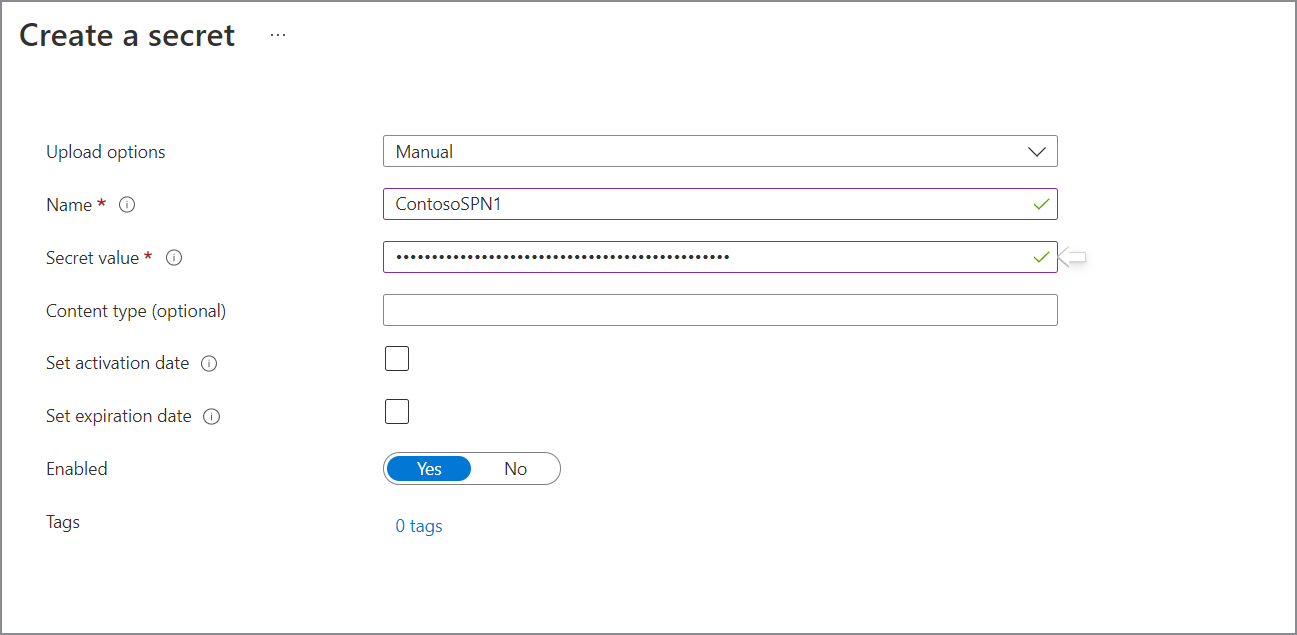
If your key vault isn't connected to Microsoft Purview yet, you need to create a new key vault connection.
In the Microsoft Purview Studio, go to the Data map in the left menu. Go to Sources.
Select the registered Power BI source from cross-tenant.
Select + New scan.
Give your scan a name. Then select the option to include or exclude the personal workspaces.
Note
If you switch the configuration of a scan to include or exclude a personal workspace, you trigger a full scan of the Power BI source.
Select your self-hosted integration runtime from the drop-down list.
For the Credential, select Service Principal, and then select + New to create a new credential.
Create a new credential and provide the following required parameters:
- Name: Provide a unique name for credential
- Authentication method: Service principal
- Tenant ID: Your Power BI tenant ID
- Client ID: Use Service Principal Client ID (App ID) you created earlier
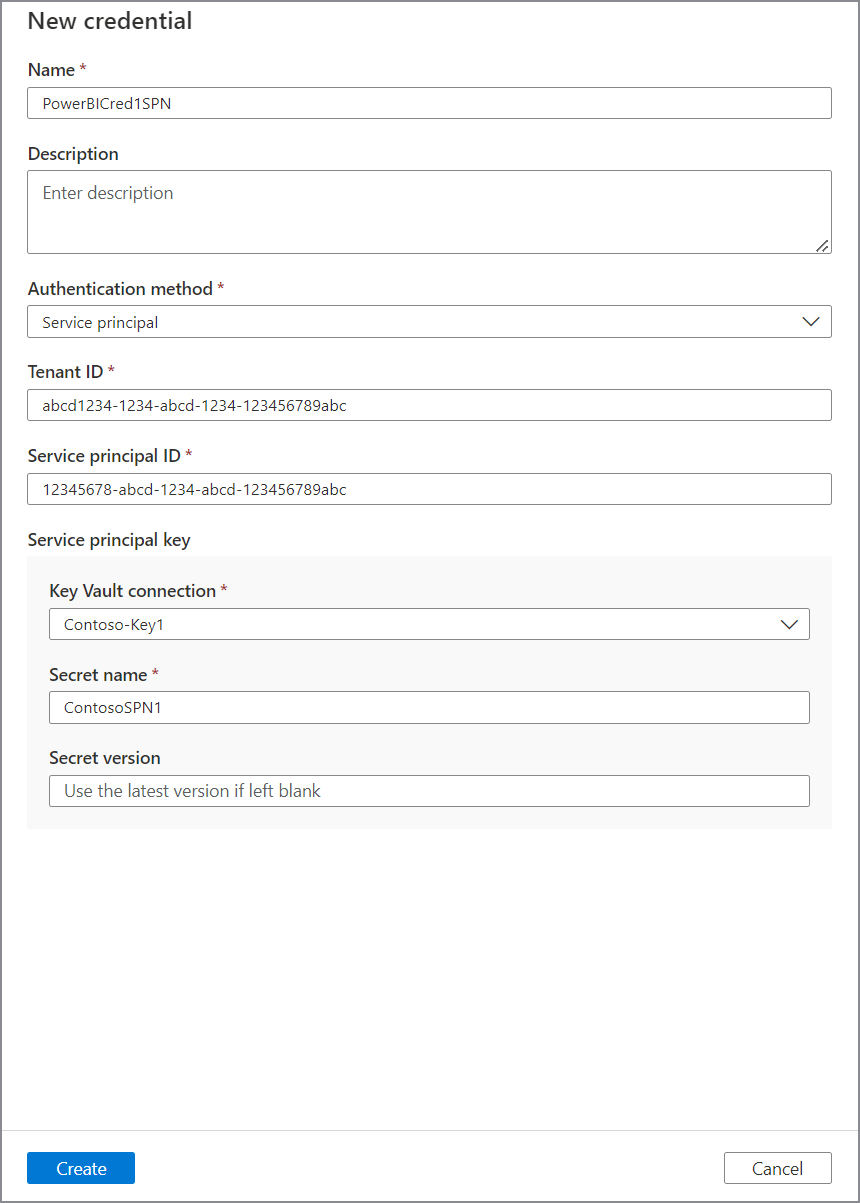
Select Test connection before continuing to the next steps.
If the test fails, select View Report to see the detailed status and troubleshoot the problem:
- Access - Failed status means that the user authentication failed. Validate if the App ID and secret are correct. Review if the credential contains the correct client (app) ID from the app registration.
- Assets (+ lineage) - Failed status means that the authorization between Microsoft Purview and Power BI has failed. Make sure that the user is added to the Fabric Administrator role (former Power BI Administrator role), and has the proper Power BI license assigned.
- Detailed metadata (Enhanced) - Failed status means that the Power BI admin portal is disabled for the following setting: Enhance admin APIs responses with detailed metadata.
Set up a scan trigger. Your options are Recurring or Once.

On Review new scan, select Save and run to launch your scan.
Tip
To troubleshoot any issues with scanning:
- Confirm you have completed the deployment checklist for your scenario.
- Review our scan troubleshooting documentation.
Deployment checklist
The deployment checklist is a summary of all the steps you'll need to take to set up a cross-tenant Power BI source. You can use it during setup or for troubleshooting, to confirm you've followed all the necessary steps to connect.
- Public access with Azure IR
- Public access with Self-hosted IR
- Private access with Managed VNet IR (v2 only)
- Private access
Scan cross-tenant Power BI by using delegated authentication in a public network
Make sure the Power BI tenant ID is entered correctly during the registration. By default, the Power BI tenant ID that exists in the same Microsoft Entra instance as Microsoft Purview will be populated.
Make sure your Power BI metadata model is up to date by enabling metadata scanning.
From the Azure portal, validate if the Microsoft Purview account network is set to public access.
From the Power BI tenant admin portal, make sure the Power BI tenant is configured to allow a public network.
Check your instance of Azure Key Vault to make sure:
- There are no typos in the password or secret.
- Microsoft Purview managed identity has get and list access to secrets.
Review your credential to validate that the:
- Client ID matches the Application (Client) ID of the app registration.
- For delegated auth, username includes the user principal name, such as
johndoe@contoso.com.
In the Power BI Microsoft Entra tenant, validate the following Power BI admin user settings:
- The user is assigned to the Fabric Administrator role (former Power BI Administrator role).
- At least one Power BI license is assigned to the user.
- If the user is recently created, sign in with the user at least once, to make sure that the password is reset successfully, and the user can successfully initiate the session.
- There are no multifactor authentication or conditional access policies enforced on the user.
In the Power BI Microsoft Entra tenant, validate the following app registration settings:
- The app registration exists in your Microsoft Entra tenant where the Power BI tenant is located.
- If service principal is used, under API permissions, the following delegated permissions are assigned with read for the following APIs:
- Microsoft Graph openid
- Microsoft Graph User.Read
- If delegated authentication is used, under API permissions, the following delegated permissions and grant admin consent for the tenant is set up with read for the following APIs:
- Power BI Service Tenant.Read.All
- Microsoft Graph openid
- Microsoft Graph User.Read
- Under Authentication:
- Supported account types > Accounts in any organizational directory (Any Microsoft Entra directory - Multitenant) is selected.
- Implicit grant and hybrid flows > ID tokens (used for implicit and hybrid flows) is selected.
- Allow public client flows is enabled.
In Power BI tenant, from Microsoft Entra tenant, make sure Service Principal is member of the new security group.
On the Power BI Tenant Admin portal, validate if Allow service principals to use read-only Power BI admin APIs is enabled for the new security group.
Next steps
Now that you've registered your source, see the following guides to learn more about Microsoft Purview and your data.
Feedback
Coming soon: Throughout 2024 we will be phasing out GitHub Issues as the feedback mechanism for content and replacing it with a new feedback system. For more information see: https://aka.ms/ContentUserFeedback.
Submit and view feedback for